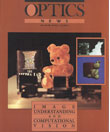Feature Articles
Approaching the irradiance of the sun through nonimaging optics
In designing a concentrator as an image-forming system, unnecessarily high standards are being set since high light collection rather than imaging is desired. Nonimaging designs exceed the concentration attainable with focusing techniques by factors of four or more and approach the thermodynamic limit. These methods have been applied to concentrate terrestrial sunlight by 56,000 fold and are capable of approaching or even exceeding the surface irradiance of the sun.
by Philip Gleckman, Joseph O'Gallagher, and Roland WinstonISO polishes its crystal ball
The International Standards Organization (ISO) has called on professionals in the field to help plan its agenda by doing some crystal ball gazing. ISO covers standards writing in all areas of technology, except for electrical and electronic standards which are the responsibility of the International Electrotechnical Commission (IEC). ISO work is carried out by some 2,400* technical bodies and 20 000 experts worldwide. Since it was founded in 1947, ISO has published some 7,000 standards.
by Robert E. ParksIntegrating visual cues for object segmentation and recognition
Looking around, we perceive the world as a collection of objects rather than as an amorphous aggregate of texture and color. The proficiency of our visual system in constructing a sensible interpretation of the surrounding scene tends to mask the enormous complexity of vision, considered as an information processing task. Stated concisely, this task is to interpret the image formed on the retinal mosaic in terms of physical objects and situations, arriving eventually at a description that in most cases can be put into words.
by S. Edelman and T. PoggProgress toward a simple, parallel vision machine
Any intelligent agent, be it robot or human, needs to continually update its knowledge about the surrounding environment, and images offer a rich source of relevant information. Unfortunately, however, in normal two-dimensional images, the effects of viewing geometry, illumination, surface reflectance, and object shape are confounded together in a way that makes it very difficult to extract interesting information about the surrounding scene.
by Alex Pentland

![Infinity Mirrored Room– Brilliance of the Souls 2014 by artist Yayoi Kusama. [© YAYOI KUSAMA]](https://opnmedia.blob.core.windows.net/$web/opn/media/images/articles/2024/0724/departments/202407-cover-web.jpg?ext=.jpg)
![An experimental scheme demonstrated by researchers at Princeton and Yale universities, USA, can convert physical noise into errors that can be corrected more easily. [F. Wojciechowski, Princeton University]](https://opnmedia.blob.core.windows.net/$web/opn/media/images/articles/2024/0624/departments/202406-cover-web.jpg?ext=.jpg)
